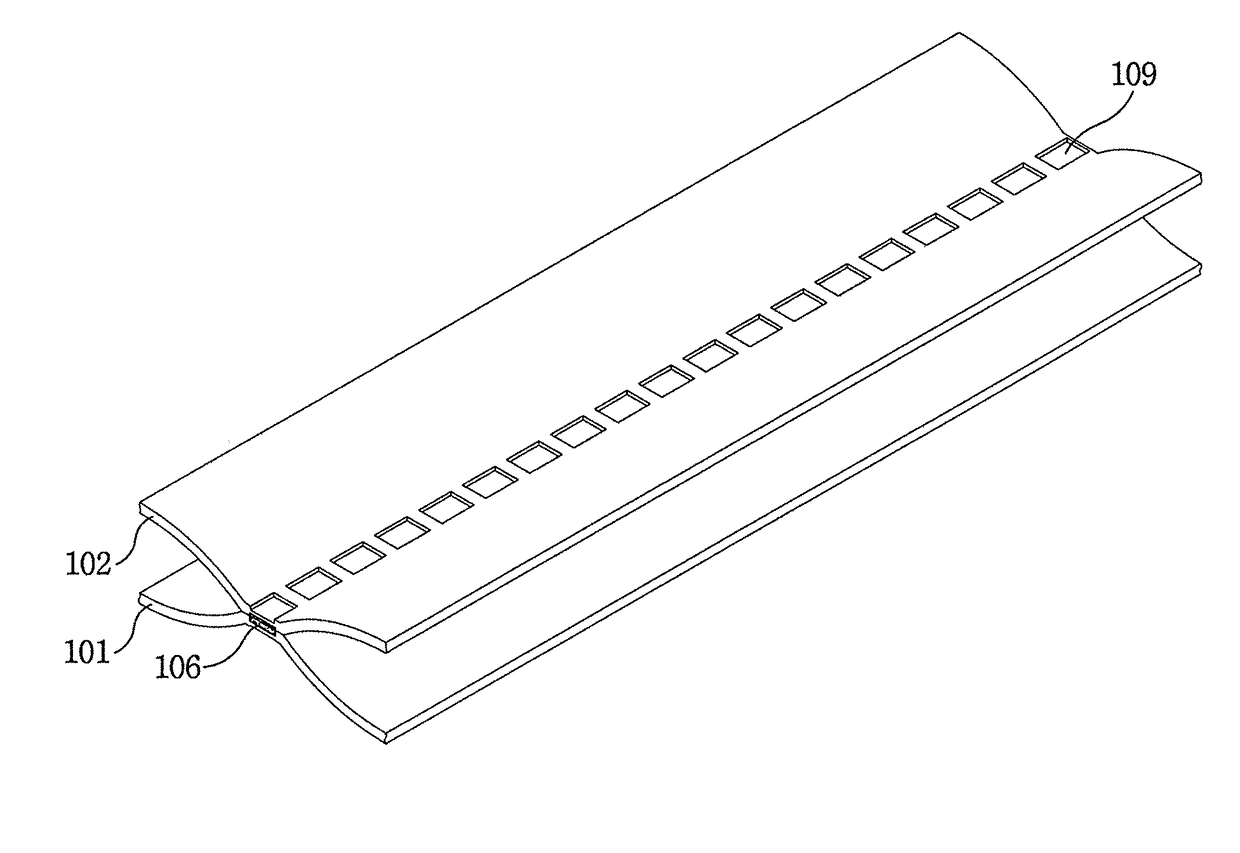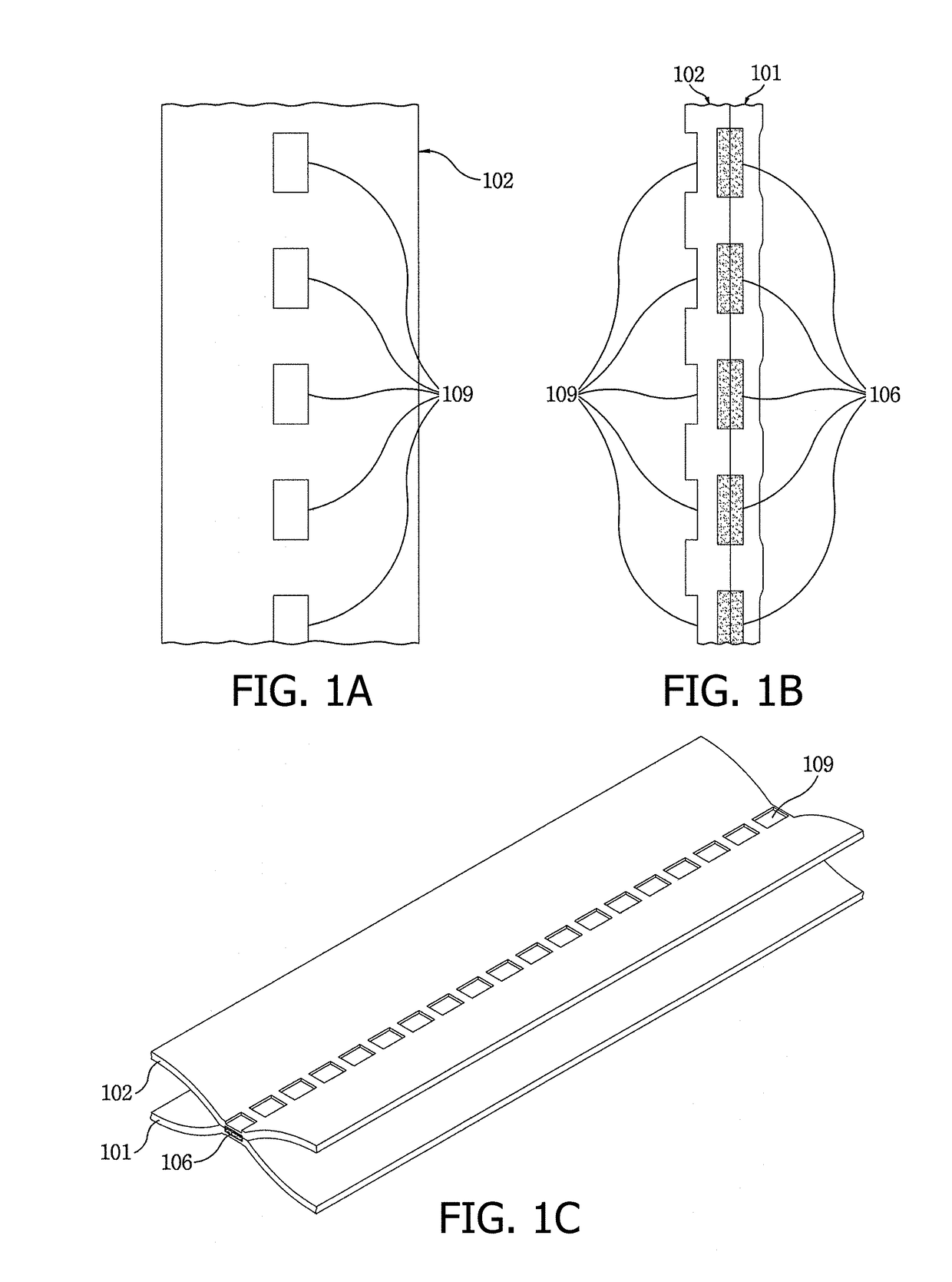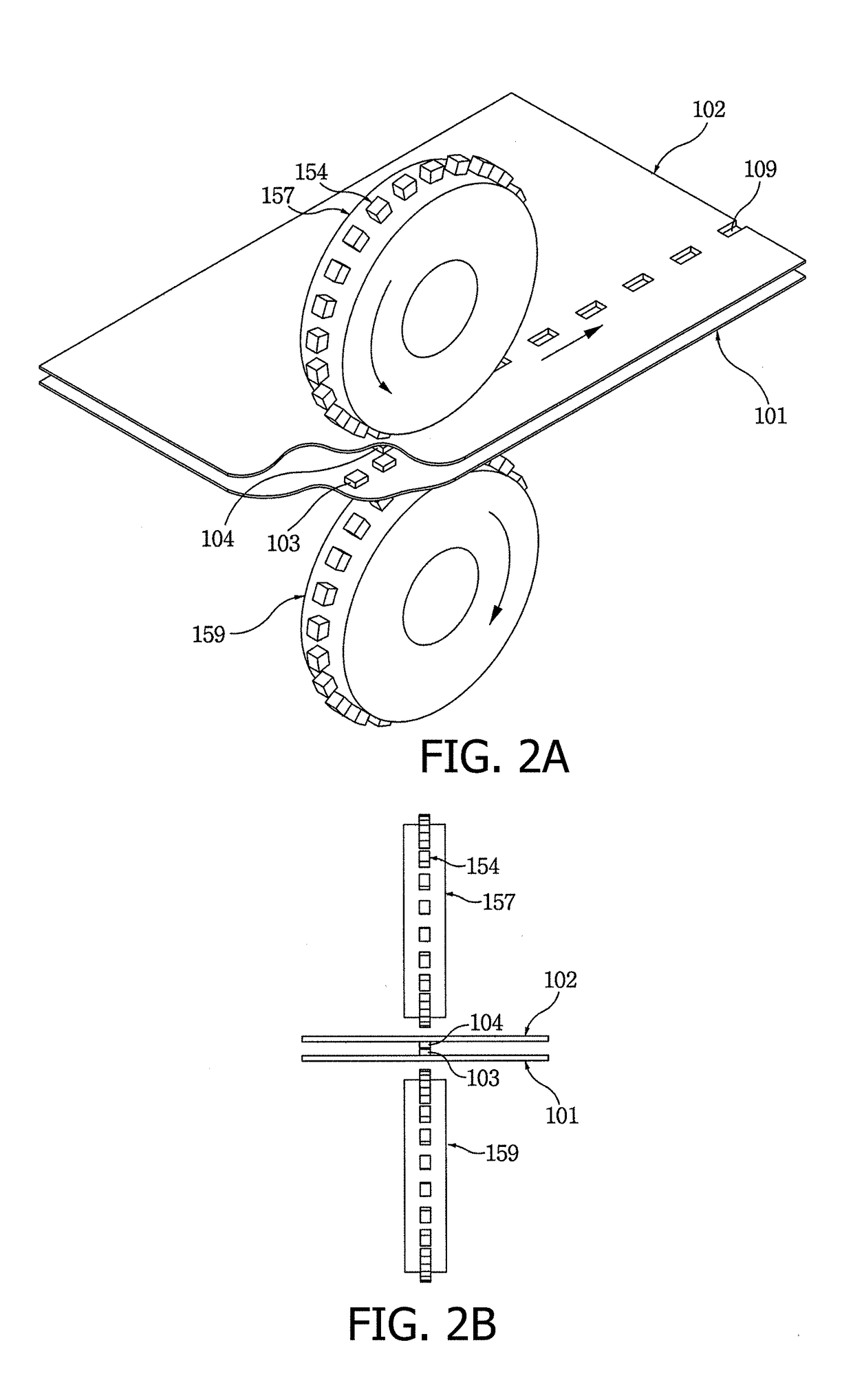Method for seamlessly coupling fabric using bonding pattern line formed by high-frequency bonding technique
a high-frequency bonding and seamless technology, applied in the field of seamless fabric combining using high-frequency bonding pattern lines, can solve the problems of affecting the function of the coating fabric, affecting the quality of the finished product, so as to achieve excellent adhesiveness and adhesive durability, and without causing any damage to the fabric
- Summary
- Abstract
- Description
- Claims
- Application Information
AI Technical Summary
Benefits of technology
Problems solved by technology
Method used
Image
Examples
Embodiment Construction
[0033]The first purpose of the present invention is to form a bonding pattern line by high-frequency heating an inner fabric and an outer fabric under pressing using an adhesive, and thereby provide a seamless combining method for combining the inner fabric and the outer fabric, wherein the adhesive is applied to the inner surface of the inner fabric, the inner surface of the outer fabric, or both, or attached to an optional mesh-type reinforced material to be inserted between the inner fabric and the outer fabric for use.
[0034]According to one embodiment of the present invention, the adhesive can be applied directly to the inner fabric and the outer fabric, and accordingly, the seamless combining method for fabrics can be performed in accordance with the steps below:
[0035](1) a preparing step of preparing an inner fabric and an outer fabric,
[0036](2) a printing step of printing a heat-reactive liquid adhesive in a predetermined printing pattern on an inner surface of the inner fabr...
PUM
| Property | Measurement | Unit |
|---|---|---|
| width | aaaaa | aaaaa |
| frequency | aaaaa | aaaaa |
| size | aaaaa | aaaaa |
Abstract
Description
Claims
Application Information
 Login to View More
Login to View More - R&D
- Intellectual Property
- Life Sciences
- Materials
- Tech Scout
- Unparalleled Data Quality
- Higher Quality Content
- 60% Fewer Hallucinations
Browse by: Latest US Patents, China's latest patents, Technical Efficacy Thesaurus, Application Domain, Technology Topic, Popular Technical Reports.
© 2025 PatSnap. All rights reserved.Legal|Privacy policy|Modern Slavery Act Transparency Statement|Sitemap|About US| Contact US: help@patsnap.com



